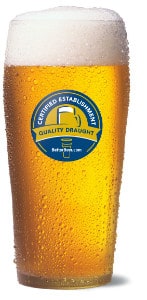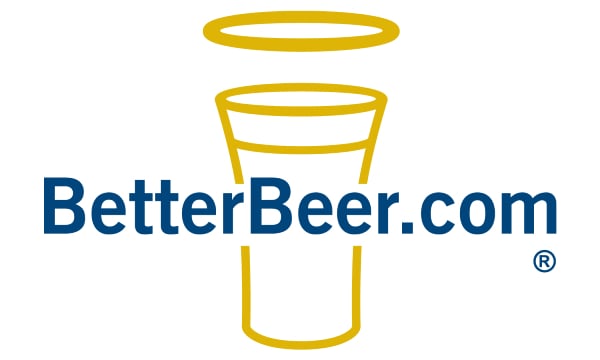Pint Speak
Definition of a Pint
There has been some noise over the past few years about the use of the word Pint and how it relates to the actual amount of beer in the glass.
It first started in 2013 in BC where some licensees switched to a 16 oz Pint, which as you know is an American Pint.
This was called out in the Vancouver Sun, investigative reports style. This prompted a knee-jerk reaction from the government (probably an election issue) to pass a law that all "Pints of draft" must be 19.5 Imperial fluid ounces.
Why the government spells draught the American way and uses imperial measurement instead of milliliters is beyond me.
In Sept 2014, the Toronto Star did a piece called “Tastes great, but less filling now runs afoul of the law” on Toronto bars pouring “pints” and what was perceived as their pour size.
There are two major flaws with the article that some people outside of the industry won’t realize:
1) most beer glasses in Canada are made in the US to US fluid ounce measurement
2) you cannot accurately measure the liquid in one vessel by pouring it into a graduated cylinder, which may or may not be accurately calibrated (measuring cup).

Point One – Yes, most (almost all) beer glasses come from the US because there are no glassware manufacturers in Canada.
If you are a big brewer creating a beer glass, you make the custom mold, with a focus on the shape that speaks to the brand identity and flavour. Most often they will use the US fluid oz measurement since this is the standard for North America.
If you are a small Canadian brewer, you use a pre-existing beer glass instead of creating a mold of your own – why re-invent the wheel – that glass is most probably made in the USA.
Let’s make this easy and convert everything to milliliters:
- One US fluid oz. is 29.58 ml.
- One imperial fluid oz is 28.41 ml
So, if most of the glassware is 20 US fluid oz, they are 591.6 ml full.
But any good bar (most in the Star article are good bars) will pour a head on the beer, usually the height of a dime standing on its edge.
That means 18 US fluid oz or 532.4 ml.
Foam is at least 25% beer, so add in half a fluid oz of beer (14.8 ml) and you have a glass of beer that has 547.2 ml of beer.
The government regulation says that the “pint” should be 19.5 Imperial fluid oz., which is 554 ml (19.5 x 28.41). They allow for a plus minus of half an imperial oz (14.2ml), so by their definition, an acceptable “pint of draft” can be 539.8 ml.
But wait! The government says that the foam doesn’t count!!
Reality check – The foam is beer and it does count. Anyone who knows anything about beer knows that the head is incredibly important and that the head is made up of beer.
Besides, if you pour it with no head on it, you can’t serve it as it spills down the side and gets everyone and everything wet.
Even if you don’t count the head on the beer, the difference between a properly poured glass of beer in a 20 US fluid oz glass and the government’s definition of a “Pint of draft” is a difference of seven milliliters: an acceptable “pint of draft” can be 539.8 ml. and 18 US fluid oz is 532.4 ml = less than 7 ml.
There you have it – a 20 US fluid oz glass of beer that is properly poured meets the government regulation to what a pint should be, minus seven milliliters.

Point Two – I have poured a beer or two in my day and am fully aware that you cannot pour beer from one container into another without losing beer somewhere. Beer will spill, it will partly remain on the inside of the glass, the glass won’t be entirely empty, it foams,…
I spoke with my good friend Giulio Accardi from Brand Concepts (known in the industry as “The Glass Man”) who told me that the proper way to measure how much liquid is in a glass accurately is to use a digital scale and room temperature water.
To make the Star investigative report legit, they would have had to:
- Take the glass of beer and mark the top line of the beer.
- Empty and clean the glass.
- Pour water to the line where the beer was.
- Measure how many grams the water weighs (assuming they calculated the tare weight of the glass first) to determine the number of milliliters (1 g = 1 ml).
This is the method that the glasses manufacturers use to ensure consistency when making glasses.
The real issue here is that bars and restaurants are using the word “Pint” a little too freely.
I’m well travelled and I can tell you that this is not just a Vancouver or Toronto issue.
Here is my recommendation for bars & restaurants:
- Use branded glasses to ensure size consistency within the brand (yet another reason to use branded glasses). Staff pouring the same brand into a variety of glasses creates inconsistency.
- Determine the amount of beer you are pouring into the glass using the measurement method above in point two. This should be easy as more and more glasses are coming with a fill line on them now anyhow.
- Use a dime to determine pour/head level if there is no line on the glass.
- On your bar/drink menu, list your beers by brand or category and include the amount that the guest should expect to receive in Imperial fluid ounces. It would make more sense to list in milliliters, but most people don’t know the conversion. Round down a bit to keep everyone happy, if it is 19 Imperial fluid ounces, call it 18.
- If you find that all of the brands in a particular category are within an ounce or two, it may be easier to list the lowest amount for the entire category. The challenge lies in the fact that some higher ABV beer is served in smaller glasses, so, in this case, you would have to list the brand, pour size, and price for each brand.
- Descriptions of the beer are a nice touch as well, but not necessary.
- Don’t call anything a “Pint” on your menu, just list the specifics above. Unless you can ensure every glass of beer will contain more than 554 ml of liquid, then call it an “Imperial Pint”.
It’s disappointing that it has come to this, but I understand why. Like many things in our industry, it comes down to consistency and education – not only of bar staff but consumers as well.
Enjoy your pint glass of beer.
Cheers!
